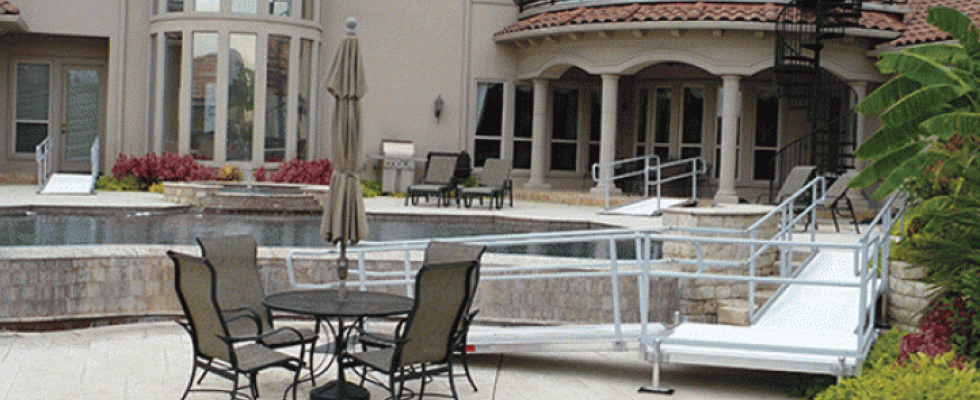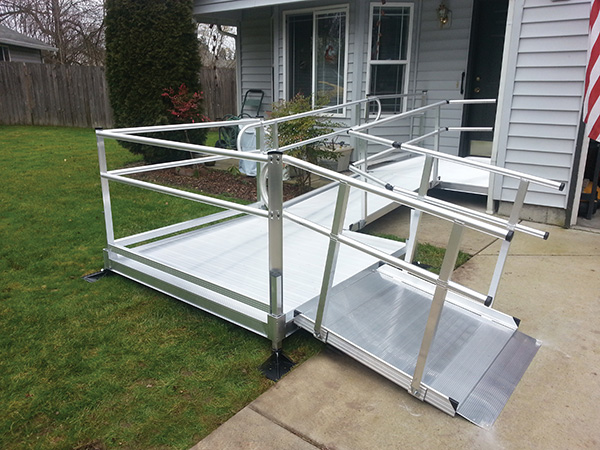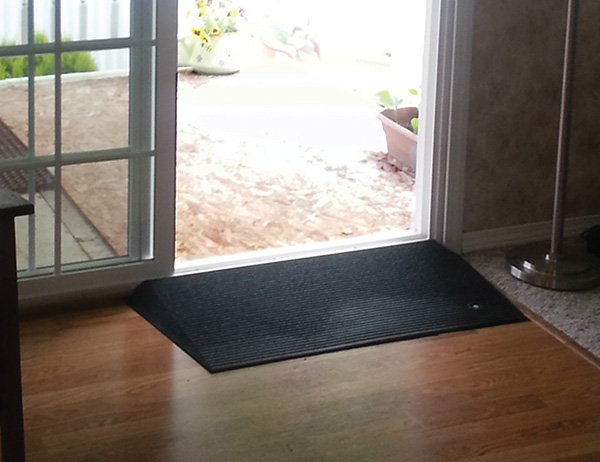
The HME market is currently filled with buzz words such as “aging in place,” “baby boomer” and “home accessibility,” but these terms are surrounded by much ambiguity on their specific relevance to the DME provider. In recent discussions with DME dealers, I found that many of them have knowledge of various needs and some provide a few products to assist with those needs, but they deal with those needs only based on the products they currently offer, rather than helping each customer develop a complete accessibility solution. Costs associated that are being tossed around the industry creating the market size are varied, but they all tell the same story. Records show 76 million births between 1946 and 1964, with approximately 4 million of those having died. This would net about 72 million baby boomers; however Census 2000 counted 79.6 million people in that category. Regardless of which population size is considered the most credible, both suggest that this market segment is among the largest that the HME industry has ever seen. Continued focus on this group of people aging at home shows that this segment of the population will need a multitude of devices and equipment, ranging from access to the home to how they eat and bathe. Unfortunately, many of the current approaches to this market need are reactive rather than proactive. Needs are identified after an event has happened instead of being defined before an event—such as a fall in the bathroom—has occurred. Recent numbers indicate that the average hospital stay after that type of incident exceeds $15,000. The landscape of the health care market has changed dramatically during the past 10 years and is destined for more change with the newly legislated health insurance initiative and competitive bidding. As the market has evolved, it has become more evident that the home is a large part of health care consideration. Failure to consider and invest in the home as part of health care will often result in institutional care because a person is unable to take care of himself or herself—can’t bathe or get in and out of bed safely or is simply unable to use kitchen utensils well enough to cook.
Define Your Market Segment
The needs in the market are as varied and diverse as the individuals who make up the millions of the baby boomer population. Manufacturers in the marketplace continue to come up with creative and innovative solutions to the needs that are present and often have resourceful options to help you merchandize those needs within the DME storefront.
 Employ an accessibility checklist for customers to consider all areas of the home that require modification.
Employ an accessibility checklist for customers to consider all areas of the home that require modification.
The disconnect often takes place during the implementation of those products needed to help maintain an active, vibrant lifestyle. For those unfamiliar with medical equipment—partially because they have never had a need for it—the act of simply acquiring the equipment can be a challenge after a fall has occurred or a progressive disease has made the equipment necessary. In addition, basic human pride prevents many from admitting that they could benefit from various forms of accessibility devices prior to a catastrophic or life-changing event. In many cases, those who would benefit from many of the accessibility products that you carry in your showroom simply do not know that the products exist or how they might improve their current lifestyle. When the need arises, because of the general unfamiliarity of the medical equipment market, many customers default to a handyman or contractor who may not have all of the knowledge necessary to provide the most efficient and accurate solution. This solution must not only address today’s needs, but also be sustainable and buildable for future needs. Additionally, they may not have access to the most up-to-date equipment and solutions available. Jerry Keiderling, president of Accessible Home Improvement of America (AHIA) says, “Those qualified as remodelers may have little or no idea how an individual’s diagnosis, prognosis or plan of care will affect the outcome of a successful remodel, or what additional accessibility equipment might be suitable.” This situation can often result in unnecessary expense as the changes made today may have to be changed again in the near future and completely remodeled. Situations such as this prove the need to have complete, synergistic solutions that are big-picture and long-term oriented rather than simply addressing the issue at hand. This does not mean that the homeowner must institute the entire accessibility goal in one project, but the goal should be in place with the plan for incremental changes as the needs progress and develop. Executing the project in steps allows for gradual changes that can be built upon over time without having to rebuild previous alterations. It is also not necessary to take care of each aspect of the solution in-house, if certain functions of the plan—such as complex product installations or structural modifications to a home—are outside your field of expertise. Key partnerships with other professionals, businesses and contractors may be the best solution for you in your market segment to attain the highest level of competency resolving the needs of the end user.
Develop a Strategy
Many businesses paint themselves into a niche because they fail to see who, outside of their normal customers, their market could or should include. If your goal is to excel in this market, then it is important to develop a strategy that addresses your approach to the end user, the equipment that you will offer and the steps that you will take to solve their needs—current and future. DIY has become a common term as there are many attempts to do it yourself in a variety of situations. The successful DME strategy for reaching the accessibility goal should provide the expertise to remove the DIY desire and provide the tools and resources to assist in achieving that goal.
 Help your customers find the home access solutions they need.
Help your customers find the home access solutions they need.
Having an accessibility checklist is often a good tool to help assess a home or set of needs; however, do not let that list detract from the purpose of accessibility, which is maintaining and improving the lifestyle of an individual. The home care professional may go into the home with the desire of helping a client get out of the house, to get to the doctor or prevent falls, which are very important. However, the client may have other goals that they would like to be able to achieve, such as go to church, read a book or cook a special meal when family visits—all of which can be achieved with the right accessibility devices. These same needs may often be overlooked if a consultative approach is not used. “Many individuals may leave a hospital after a hip replacement or similar surgery with a comprehensive list of medical equipment that is needed. These lists are often inclusive of any type of device that could be needed, but are not specific to that patient or their specific needs,” says Lisa Johnson of Jackson Medical Equipment in St. Paul, Minn. “I spend time talking to them about their specific needs to keep them from wasting money on items that they do not need, as well as to make sure that they get the items they do need. There is a solution available for almost any need and many health care professionals may not be aware of all of the products offered.”
Determine Your Position
Becoming the expert is the key factor in providing the best solution. There are several organizations and training sessions that can help educate your staff to become experts in this market. One global course is the Certified Environmental Access Consultant (CEAC) course offered by AHIA that includes course study, a final exam and requires a passing grade. Individual manufacturers such as EZ-ACCESS and Best Bath Systems have respective manufacturer training and/or certification programs that are specific to the products that they offer. Education and consultation provide excellent opportunities to communicate with the end users, as well as the caregivers or family members, about the need for an accessibility goal, and to demonstrate that you have solutions that will help them develop the plan to attain that goal. This market is not a future event—it is developing today and will continue to evolve. The HME providers who will be successful in the area of aging in place are the ones who will intentionally determine the strategy and approach they will take toward development, and the mode and means it require to become the expert and resource in their marketplace. This article is part of a 12-month home accessibility series. Each segment will focus on a particular aging-in-place need to provide the insight and resources necessary to be successful in this growing market.




